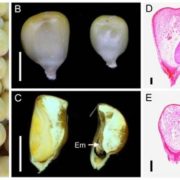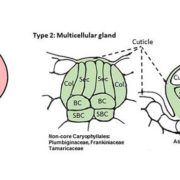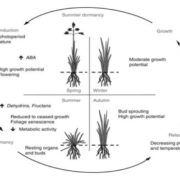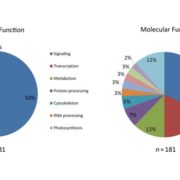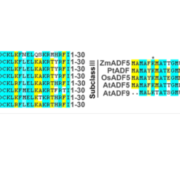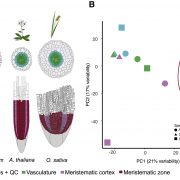Carboxysome encapsulation of the CO2-fixing enzyme Rubisco in tobacco chloroplasts (Nature Comms.)
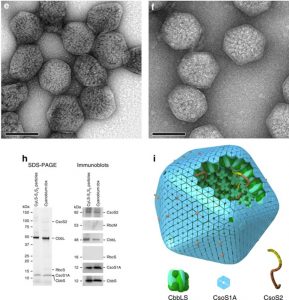 One of the fundamental challenges facing terrestrial plants occurs when CO2 levels are depleted at Rubisco, causing its inefficient oxygenase activity to dominate. Some plants minimize this problem by adding a carbon-fixing step upstream of Rubisco, and various algae and cyanobacteria sequester Rubisco into compartments such as carboxysomes into which they pump CO2. Engineering plants to produce the carboxysome / CO2 pump should enable them to operate with greater water-use efficiency (due to less need to continually open their stomata) and greater nitrogen-use efficiency (due to less need to synthetize large amounts of Rubisco). Long et al. describe their efforts to produce Rubisco-sequestering carboxysomes in tobacco chloroplasts. Surprisingly, they were able to achieve this by introducing only a subset of the genes involved in carboxysome formation in cyanobacteria. Because they replaced tobacco’s own Rubisco with the low-CO2 specificity cyanobacteria enzyme, the resulting plants required elevated CO2; this limitation should be overcome by the next engineering step in which the CO2 pump is introduced. (Summary by Mary Williams) Nature Comms. 10.1038/s41467-018-06044-0
One of the fundamental challenges facing terrestrial plants occurs when CO2 levels are depleted at Rubisco, causing its inefficient oxygenase activity to dominate. Some plants minimize this problem by adding a carbon-fixing step upstream of Rubisco, and various algae and cyanobacteria sequester Rubisco into compartments such as carboxysomes into which they pump CO2. Engineering plants to produce the carboxysome / CO2 pump should enable them to operate with greater water-use efficiency (due to less need to continually open their stomata) and greater nitrogen-use efficiency (due to less need to synthetize large amounts of Rubisco). Long et al. describe their efforts to produce Rubisco-sequestering carboxysomes in tobacco chloroplasts. Surprisingly, they were able to achieve this by introducing only a subset of the genes involved in carboxysome formation in cyanobacteria. Because they replaced tobacco’s own Rubisco with the low-CO2 specificity cyanobacteria enzyme, the resulting plants required elevated CO2; this limitation should be overcome by the next engineering step in which the CO2 pump is introduced. (Summary by Mary Williams) Nature Comms. 10.1038/s41467-018-06044-0


